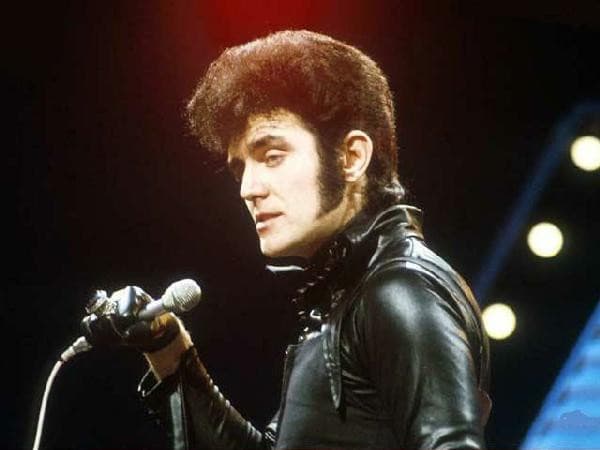
A playful, nonsensical anthem of pure infatuation.
In the early 1970s, the UK music scene was a shimmering, anarchic explosion of glitter, platforms, and audacious energy. Amidst the chaos of denim-clad rockers and feather-boa-wearing dandies, a new kind of star swaggered onto the stage, cloaked in black leather and an aura of cool, silent menace. This was Alvin Stardust, and his debut single, “My Coo Ca Choo,” released in 1973, wasn’t just a song; it was a statement. It was a perfectly crafted piece of glam rock theatre that cemented his place in a pantheon of musical icons. A massive and immediate sensation, the track soared to number two on the UK Singles Chart, prevented from reaching the top spot only by another glam rock legend, Gary Glitter’s “I’m the Leader of the Gang (I Am).” While it didn’t find the same level of chart success in the United States, in Britain, it was the sound of an entire generation’s Friday nights and Saturday mornings, a rebellious hum that filled the airwaves.
The story behind Alvin Stardust and this particular song is one of masterful reinvention. The man behind the persona was Bernard William Jewry, a singer who had found modest success in the late ’50s and early ’60s under the name Shane Fenton. But by the early ’70s, his star had waned. It was the brainchild of record producer Peter Shelley who saw an opportunity for a comeback. Shelley, who had actually written and recorded his own version of “My Coo Ca Choo” a few months earlier, conceived of a new, darker persona, a rock and roll outlaw with a signature stare. Donning the now-iconic black leather suit, slicked-back hair, and a handful of silver rings, Jewry was reborn as Alvin Stardust. The visual was as important as the music itself, and his legendary appearances on Top of the Pops, where he would stand still as a statue, eyes fixed on the camera, captivated millions.
The song itself is a perfect encapsulation of the glam rock ethos. It’s not meant to be analyzed for deep, profound meaning. Instead, the lyrics, written by Peter Shelley, are a collection of playful, slightly nonsensical phrases. The title itself, “My Coo Ca Choo,” is a made-up expression of joy and affection. It’s a pure, unadulterated declaration of infatuation, wrapped in a catchy, swaggering rhythm. It was a song that you didn’t need to understand; you just had to feel it. Its simple, repetitive chorus was designed for singing along and stomping your feet to. For a generation caught between the serious, socially conscious music of the late ’60s and the burgeoning punk scene, “My Coo Ca Choo” was a dose of pure, unpretentious fun.
Looking back, the song is a nostalgic time capsule. It takes us back to a time of vibrant, audacious fashion and a rebellious spirit that was less about anger and more about a joyful defiance of the mundane. It was the sound of a generation ready to escape into a world of sequins and stage presence. The cool, detached image of Alvin Stardust was the perfect vehicle for this anthem. He wasn’t just a singer; he was an illusion, a mysterious figure that made a simple pop song feel like something dangerous and exciting. For those of us who remember watching him on our flickering television screens, “My Coo Ca Choo” is more than just a melody. It’s the lingering echo of a time when music was an exhilarating visual spectacle and a three-minute pop song could make you feel like the coolest person in the room.